Venus: Possibilities of Life, Colonization, and Terraforming
One look at Venus today with its surface temperature of 863F (462C) (that is hot enough to melt lead, tin, or zinc), a dense atmosphere of 96% carbon dioxide that makes the surface pressure similar to 1km underneath the ocean, winds that are 60 times faster than the planets rotation, and clouds of sulfuric acid that reflect the sun and you would think there is no way it supports life.
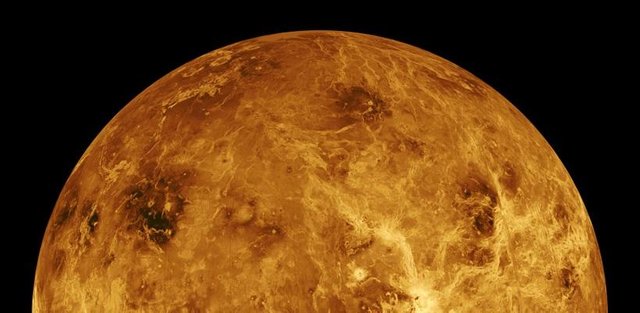
But it wasn’t always like that. Early Venus and Earth may have been very similar long ago, nearly twins.
According to new data from NASA climate modelling research, it states that Venus may have had a liquid water ocean and surface temperatures of 52-59F (11-15C) for up to 2 billion years! Venus has a slow rotation (it takes 243 Earth days for the planet to rotate) and that seems to have protected it from the high temperatures. Under their model the slow rotation warmed the dayside and created rain clouds that ended up blocking the harsh sunlight. In the years since the planets were created the Sun has heated up and became 40% more luminous.
Could life have been created and then evolved to survive a changing Venus?
Life
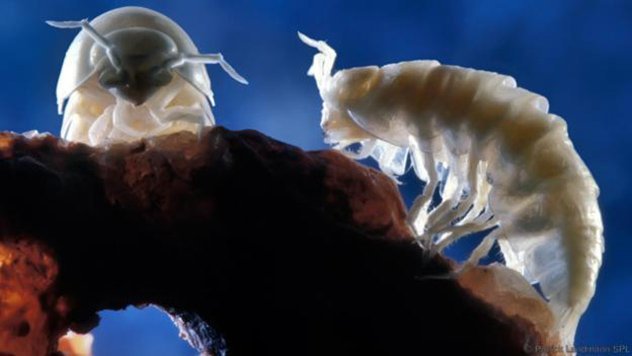
The changes to the Venus we see today would most likely have been gradual, allowing evolution to take place. Something similar has happened here on Earth in Romania. Life in Movile Cave was closed in for at least 5.5 million years and a complete ecosystem so different to anything elsewhere has formed.
In that cave the atmosphere is hydrogen sulfide, carbon dioxide, methane, and only has about 7% Oxygen – toxic to humans and life that lives on the surface. It has water highly contaminated with sulfuric acid and ammonia, but the few researchers that went down have found 33 species that have adapted to living there. No light reaches there, so the food chain is created by bacteria and fungi that eat the methane and sulfur – in turn other species eat them and predators then eat those. Doesn’t sound too far off what could happen in a deep cave under Venus. Species can survive deep underwater and species can survive toxic atmospheres, could that have taken place on Venus?
Another theory is that life went into the clouds.
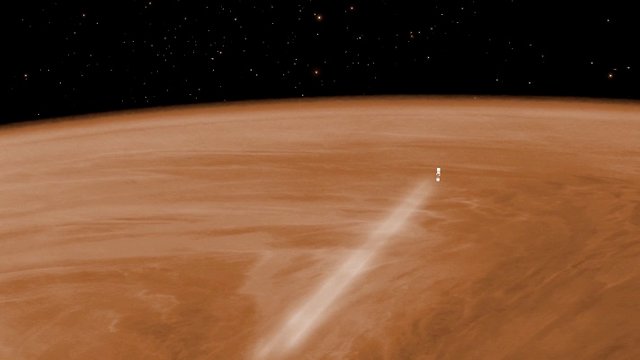
The sulfuric acid, with a pH 0, in the clouds is akin to battery acid – but even here on Earth there is life that can survive that. Called Archaean acidophiles, two species will continue to grow in at pH levels down to -.06, they live in sulfuric acid mine drainage.
According to readings from the ESA’s Venus Express probe in 2007 the solar radiation and lightning should be creating carbon monoxide in large quantities, but only little has been detected – as if something was removing it. Guess what? Those Achaea use carbon monoxide to grow and expel carbon dioxide and hydrogen. In addition, the hydrogen sulphide and Sulphur dioxide in Venus’ atmosphere react with each other, so should not be present for long unless they are being constantly replaced. The easiest explanation is it being replaced by organic processes like those Achaea.
So if early life evolved on Venus did they take to the sky and now we are reading their atmospheric eating habits and waste? Some scientists think so, and they want to send a probe that would be tethered to an atmospheric sample collector that would return to Earth. Others, such as NASA’s Chris Jones, have proposed a mission called (HAVOC).
Colonization


You remember when I said that Venus’ surface pressure is like being 1km underneath our ocean? Well that same pressure could keep Earth atmosphere filled (our air there is 60% as buoyant as helium is here) airships afloat at an altitude of 31-34 miles (50-55km), there the temperature is around 122-81F (50-27C) and the same pressure as being at 18,000ft (5,500m) on Earth. The remaining Venusian atmosphere will also protect against much of the solar radiation, so with minimal additional shielding you are looking at potentially much less radiation danger than on Mars. If a leak happened, since the pressures are at a zero differential, it would be a seep and not an explosion like if the same thing happened on Mars.
A 1km diameter sphere of Earth air could lift 700,000 tons and Venus is closer to the sun, making solar power more effective. So we could have floating solar powered cities in bubbles, harvesting carbon dioxide and nitrogen.Breathable oxygen can be created from carbon dioxide by zirconia electrolysis or by Sabatier processes, some hydrogen from the sulfuric droplets to create H2O. We could grow plants for food and recycle the water from our contained habitats. We could create robotic mining operations on the surface and haul the loads up using high tensile strength cables. As well as all the scientific research that would be conducted. You could even go outside of the habitats with only oxygen to breathe and thin face/body protection to keep the sulfur of the atmosphere off you – not a whole bulky space suit – making any outside habitat repair easier (with further data, we may not even need the light suit!).
Additionally, Venus has 90% of the gravity that Earth does (Mars has only 38%) so the bone and muscle loss that happens from low gravity would be minimal if any.
Terraforming
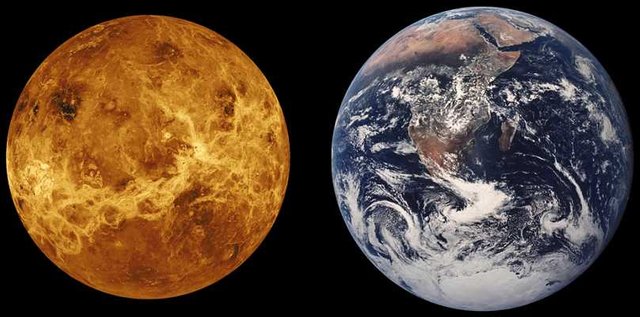
It is estimated that if Venus had the exact atmospheric composition that Earth does, the average temperature would be 79F (26C) (Earth currently is at 59F (15C)), so hotter but not extreme. It is also estimated if Venus just had 10% of the amount of liquid surface water that Earth does, 80% of its surface would be covered in a shallow ocean as Venus is relatively flat. So warm weather and lots of warm water, sounds like a great vacation spot!
How do we get it there?
The temperature needs to be greatly reduced and the dense carbon and sulfur dioxide in the atmosphere has to be removed, while an oxygen one is added.
It is no easy task.
Suggestions have been to build huge space solar shades that would block most of the sunshine from reaching the planet and could also double as solar power generators, this would help cool it. Venus’ reflective atmosphere already bounces 65% of the sun’s rays off it, so the coverage would have to be enough to block almost all of it. Some suggested to completely block it from the sun until the CO2 becomes dry ice, then ship it over to Mars to create a greenhouse effect over there. After that happened, allow the sun to shine until the planet is a comfortable temperature.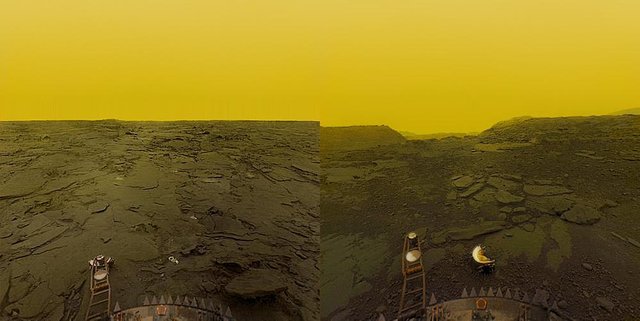
Paul Birch suggested that if we build ‘heat pipes’ filled with water/ammonia. They heat up at the bottom and rise, when they get high enough the heat is lost and the liquid condenses and falls back – repeat for a long time. This by itself won’t work, but combine it with other methods and it will decrease the time needed to terraform.
He would also introduce 4×10^19 kg of hydrogen to the atmosphere, probably harvested from Uranus. This would react with the CO2 to create carbon and water by Bosch reactions. Or to crash an icy moon into the planet slowly, or maybe 100,000 icy asteroids and comets.
Carl Sagan said in 1961 to add genetically engineered bacteria (like the Achaea’s) to the atmosphere and they would turn the carbon dioxide into organic forms. This won’t work currently because the organics would drop down and just be melted by the hot temperatures (he put forth this theory before current data). But if the planet was already partially cooled this could help speed up the process.
Other people have said to suction it up from outer space, or shoot it out from mass driver equipped balloons in the atmosphere.
But do you remember that the colonies could be harvesting the carbon dioxide? Well, get enough of them and combined they could start reducing the dense atmosphere. Combine that with some of the above suggestions, and you could terraform Venus in 200 years or so of focused effort, according to Paul Birch.
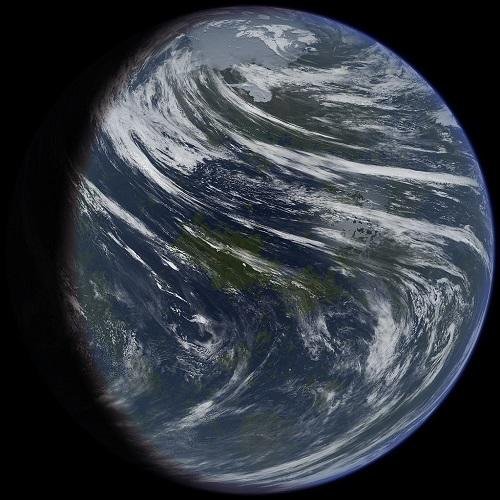
Conclusion
If it ever happens, terraforming Venus will be extremely difficult, and the methods will have to change as the terraforming progresses. What if there is Venusian life? Would that make the planet off-limits?
The question of life, colonization, and terraforming are all interesting thoughts. The first step would be to send a mission to Venus with a solar powered balloon to collect readings. Then manned missions, and eventually floating cloud cities. This is what project HAVOC is calling for, and I believe it is the way to proceed with Venus.
What are your thoughts on all of this? Leave your comments down below.
Sources
- NASA Climate Modeling Suggests Venus May Have Been Habitable
- If there is Life in Venus Cloud Tops
- Life on Venus?
- From Hospitable to Hellish: Venus May Have Supported Life
- NASA's Incredible, Futuristic, And Totally Real Plan To Establish A Human Colony On Venus
- The Surprisingly Strong Case for Colonizing Venus
- Colonization of Venus (pdf)
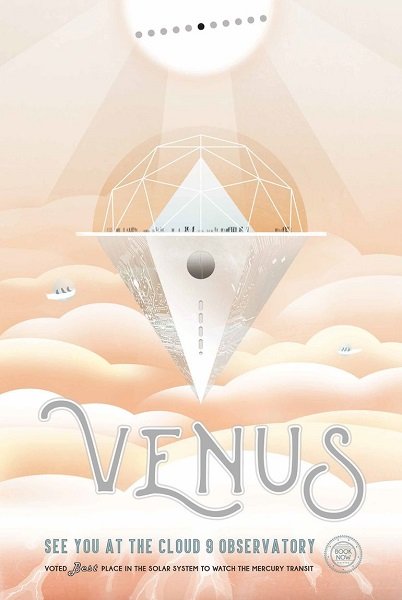
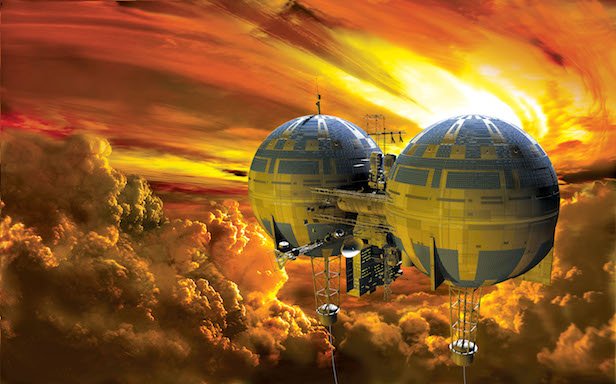
You're giving me problems, buddy. You're making me run out of words to express how impressed I am by every post you come out with!
You've turned posting into an art form, really. Very, very well presented, rich in detail and written to perfection. I honestly didn't know their was so much to this vast planet.
Amazing job as always, @getonthetrain.
I don't mind you having this problem @ezzy :-D
This is a brilliant post. I am surprised how little we hear about Venus in comparison to other planets. I've never heard anyone discuss colonisation though and you make some fascinating points for why it might be a good place to terraform.
The life issue is interesting. I think it would be off limits in many people's minds if we did find it but it depends on if there is a cost incentive. Money tends to blind people to ethical considerations!
Thank you. As far as the cost incentive, well if there were organisms I don't believe that colonization would be a problem. But if the technology ever comes to a point where terraforming is an option, and there is Venusian life, would extraterrestrial bacteria stop humans from having another whole planet full of resources? I don't think it would. They would probably make an artificial environment for some of them, and carry on.
I suspect you are right!
Money and show-off :)
Just the right weather for me! Am sick of the cold already. Awesome post mate!
It's just getting nice over here man!
Thanks a lot for all your nice post about space! I am learning a lot from you! ^^
And I learn a lot from you @lemouth!
We might not be able to go to venus soon but is there any reason NOT to test the technology? Why not build sky villages for earth?
I don't think there is so much of a need when the ground level is perfectly fine here. The preferred gas to provide lift is helium (Hindenburg still in the thoughts of people), and helium is getting more rare. While on Venus the ground is unsuitable and lift if provided by air, you are living in the gas that is also lifting you.
Perfectly fine is it? You have plenty of room? Cheap real estate? No nosey/noisy neighbors? No congestion? No crowding? You have Privacy, freedom and no bothersome rules or regulations? You're not bothered by cops or politicians?
What planet do you live on?
Actually Hydrogen, as a lift gas, wins hands down over Helium. It's cheaper, lighter and there's an unlimited supply. It's even easier to confine than helium. Oddly enough hydrogen's preferred state is NOT monatomic. It's H2 not H. The H2 MOLECULE is much larger than the He ATOM. So it doesn't' leak nearly as bad. In fact with modern day materials, such as graphene. It doesn't leak at ALL.
It's safer than gasoline. Millions of tons of Liquid hydrogen is transported daily over road, rail and barge with no problems.
The problem with the Hindenburg was that they painted it with rocket fuel.
Oddly enough, rocket fuel burns.
Of course the news media wouldn't know that.
In other news..this just in
Source
A half mile (0.8 kilometer) diameter geodesic sphere would weigh only one-thousandth of the weight of the air inside of it. If the internal air were heated by either solar energy or even just the average human activity inside, it would only take a 1 degree shift in Fahrenheit over the external temperature to make the sphere float
I've thought for a long time that Venus was being unfairly ignored. This is a great post, and I've shared it with my FB pages and groups.
It's pretty, too. Are you only using the editor for formatting, or writing your own html?
Thank you for sharing!
I am old school and just use html.
The fact that Venus is so similar in size and was once like Earth trips me out all the time. Great post!
It is amazing that things can change so drastically! The runaway greenhouse effect is a dangerous thing.
Nice cartoons from NASA. Just keep dreaming.
Is living without dreams really living?
Good question.
Well @oldtimer, I don't say anything major will happen in our lifetimes. But it all starts somewhere. There are millions of examples of things that are commonplace today, but if you showed them to someone from 200 years ago, what would that person say? Probably that they thought it impossible. But step by step things advance, as long as someone keeps moving.
You are right. Don't judge me to hard. Look at my nickname. He-he.